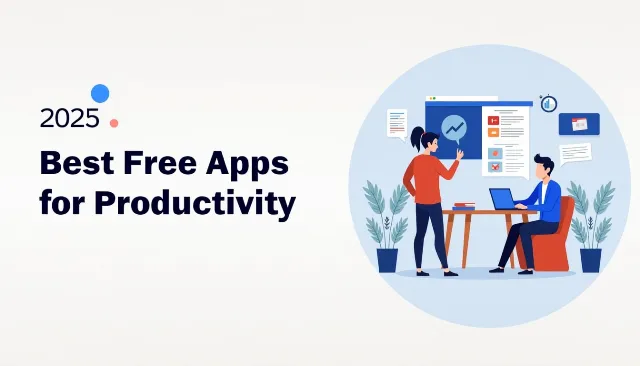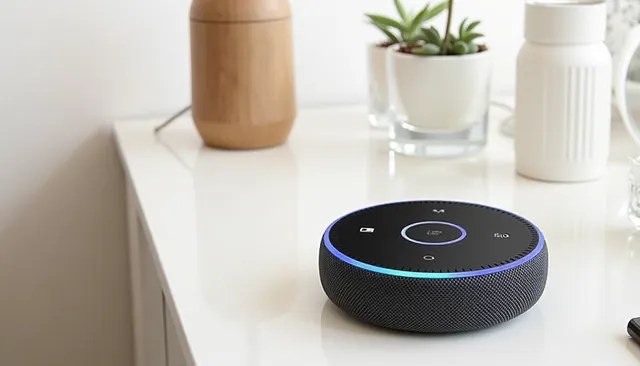1. Check Your Internet Plan
The first step in improving your internet speed is to look at your existing plan. Many people subscribe to a certain speed (for example, 50 Mbps) but never check if that speed still fits their needs. If your plan is very basic and you now use a lot of devices or stream videos often, you might be under‑provisioned. In countries like India, the average broadband speed is rising, but many users still get modest real‑world speeds.
Next, you should compare what your plan promises with what you’re actually getting. Use a speed‑test website or app to check your download and upload speeds at different times of day. If the measured speeds are much lower than your plan, then either the plan is insufficient or there are other issues. Also check whether your plan has a speed cap after a data limit or other throttling.
Finally, ask yourself whether you need a higher‑speed plan. If you have many devices (phones, tablets, laptops) and people watching videos or gaming at once, a faster plan helps. Upgrading your plan might cost more per month, but the improved experience (less buffering, faster downloads, smoother video calls) may well be worth it. Also factor in whether your current provider offers upgrades or whether switching providers might bring better value.

2. Restart Your Modem and Router
Sometimes the simplest fix is the best one: just turn your modem and router off, wait a little, and turn them back on. Routers and modems run continuously and can become sluggish over time. A restart clears out temporary glitches, frees up memory inside the router, and refreshes the connection to your internet service provider (ISP).
When you reboot your equipment, disconnect the power for about 30 seconds and then plug it back in.
Give it a few minutes to fully boot and reconnect. After this you may notice faster loading times, fewer hiccups during streaming, and smoother video calls. It’s like giving your internet gear a short “nap” so it wakes up refreshed.
It’s good to make this a habit—perhaps once a week if you use the internet heavily.
If you find yourself restarting more often than that, it might signal that the router is old, overheated, or overloaded with many devices. In that case you may want to look at upgrading your hardware or checking for interference in your home network.
3. Place Your Router in a Central Location
Where you place your router matters a lot for Wi‑Fi speed. If your router sits in a corner of the house, inside a cupboard or behind large furniture, the Wi‑Fi signals may be blocked or weakened before they reach your devices. For best coverage, place the router in a central, open spot, away from thick walls or metal objects that can block signals.
Putting the router up high (for example on a shelf) helps the signal spread more evenly. Avoid placing it at floor level behind heavy TVs, fridges or near microwaves because these things can interfere with Wi‑Fi waves. Also keep it away from other electronics that buzz or generate heat—cooler air means better performance.
If you live in a large home or have many rooms, you might still find weak zones (“dead spots”). In that case, placing the router centrally reduces the number of such zones. If you have two floors, for example, placing the router on the middle floor and centrally can help both upstairs and downstairs devices get a fair signal. Good placement reduces frustration and helps you get the most from your internet plan.
4. Limit the Number of Connected Devices
Every device connected to your network — phones, tablets, laptops, smart speakers, gaming consoles — uses part of your internet’s capacity. If you have many devices all streaming, gaming or downloading at the same time, your speed per device drops. So limiting or managing the number of active devices can improve performance for the things you care most about.
You can check which devices are connected to your router (sometimes via a mobile app provided by your ISP or router manufacturer) and see if any unknown devices are sucking up bandwidth. Also ask family members to avoid large downloads or uploads while you’re doing something important (like an online class or video call). Setting up a simple house rule like “everyone else pauses streaming while I’m teaching online” can really help.
Another way is to schedule heavy tasks for off‑peak times (when fewer people use the internet). For example, large downloads or system updates can run late at night. This frees up bandwidth for times when you really need smooth performance (say, during homework or a game). By controlling connected devices and timing usage wisely, you give your internet a better chance to perform at its best.
5. Use a Wired Connection Instead of Wi-Fi
Wi-Fi is convenient, but a wired connection using an Ethernet cable is usually faster and more stable. Wireless signals can be affected by distance, walls, or interference from other devices. When you plug your computer or gaming console directly into the router, the connection is direct and avoids these problems.
Wired connections are great for activities that need consistent speed, like online gaming, video streaming, or video calls. Even if your Wi-Fi is strong, a wired connection often reduces lag, buffering, and disconnections. It gives you the speed your internet plan promises, especially in busy households with many devices.
For homes with multiple rooms, you can run Ethernet cables to the most important devices. If running cables is hard, another option is powerline adapters, which use your home’s electrical wiring to carry internet signals. Using wired connections where possible helps you enjoy smoother performance and fewer interruptions, making your online tasks faster and more enjoyable.
6. Update Your Router’s Firmware
Routers have software called firmware, which controls how they work. Manufacturers often release updates to improve speed, fix bugs, and increase security. If your router’s firmware is old, it may not perform well or support the latest internet technologies.
Updating firmware is usually easy. Most modern routers have a web interface or a mobile app that guides you through the process. Always follow the manufacturer’s instructions carefully. Make sure your router is plugged in and don’t turn it off during the update, or it may stop working.
Keeping firmware up to date can improve Wi-Fi speed, stability, and security. Sometimes updates add features like better management of multiple devices, improved signal strength, or protection against hackers. By taking a few minutes to update your router, you help ensure your internet works smoothly and safely every day.
7. Change Your Wi-Fi Channel
Wi-Fi signals travel on channels, and if many nearby networks use the same channel, interference can slow your speed. This is especially common in apartments or crowded neighborhoods. Changing your Wi-Fi channel can reduce interference and improve your connection.
Most routers automatically pick a channel, but sometimes manual selection works better. You can use apps or software to check which channels are crowded. Pick a channel that has fewer nearby networks to get a stronger signal and faster performance.
Switching channels is simple through your router settings. By finding a less busy channel, you reduce lag and buffering on devices. This small change can make a noticeable difference, especially when multiple people are using the internet at the same time.
8. Remove Interference from Other Devices
Electronics like microwaves, cordless phones, and baby monitors can interfere with Wi-Fi signals. Even some Bluetooth devices may slow down your connection. Identifying and reducing these sources of interference helps your internet run faster.
Try to place your router away from such devices. Even moving your router a few feet can reduce interference. You can also turn off devices when they are not needed, or switch them to different frequencies if possible.
Interference can be subtle, but it often causes slower downloads, buffering, or dropped video calls. By creating a clear path for Wi-Fi signals and keeping noisy electronics away, you can make your home network more reliable and faster for everyone.
9. Use a Wi-Fi Extender or Mesh Network
If your home is large or has multiple floors, Wi-Fi signals may not reach every corner. Dead zones can make streaming slow or cause dropped connections. A Wi-Fi extender or mesh network can help. These devices pick up your main Wi-Fi signal and spread it to areas with weak coverage.
A Wi-Fi extender is usually a single device that plugs into a wall socket midway between your router and the area that needs coverage. Mesh networks use multiple units that work together to create a strong, seamless signal throughout the house. They are perfect for large homes or offices.
Installing an extender or mesh system improves internet speed in areas far from the router. It ensures that phones, laptops, and smart devices get reliable coverage everywhere. This small investment can make a big difference, giving smooth streaming, faster downloads, and uninterrupted video calls in every room.
10. Clear Your Browser Cache
Web browsers store temporary files called cache to load websites faster. Over time, too much cache can slow down your browsing speed. Clearing it regularly can improve performance and make websites load faster.
To clear cache, open your browser’s settings, find “Privacy” or “History,” and select the option to delete cached files. Don’t worry, it won’t delete your saved passwords or bookmarks. Regularly clearing the cache ensures your browser stays quick and responsive.
This simple habit helps reduce slow page loading and occasional errors when visiting websites. It’s especially useful if you notice that certain websites are taking longer to open. Keeping your browser clean keeps your online experience smooth and enjoyable.
11. Close Unnecessary Apps and Background Programs
Many devices run programs in the background, even when you are not actively using them. These programs can consume internet bandwidth and slow down your connection. Closing unnecessary apps can free up speed for what matters.
Check your phone or computer for apps that automatically update or sync data. Streaming apps, cloud storage services, and online games often use bandwidth even when idle. Closing or pausing these apps can improve internet speed for video calls, browsing, and downloads.
This is an easy way to boost your connection without changing your equipment. By managing background activity, your internet works more efficiently, and your important tasks get priority. It’s like clearing a traffic jam so your data can flow faster.
12. Use a Modern Browser
Using an outdated browser can slow down your internet experience. Modern browsers like Chrome, Edge, Firefox, or Safari are optimized for speed and security. They load websites faster and handle videos, images, and apps more efficiently.
Updating your browser is simple. Most browsers update automatically, but it’s good to check regularly. The latest versions also include new features that reduce data usage, block ads, and protect your privacy while improving performance.
A modern browser ensures smoother browsing, faster page loading, and fewer crashes. It works better with websites that use new technology, so you get a more reliable internet experience on your computer, tablet, or phone.Simple Ways to Boost Your Internet Speed
13. Scan for Malware and Viruses
Malware and viruses can slow down your internet by using your bandwidth or causing your device to work harder. Some programs run secretly in the background, sending and receiving data without your knowledge. This reduces the speed available for your normal tasks.
Using a reliable antivirus or anti-malware program can help detect and remove these threats. Many programs also offer real-time protection to prevent infections. Make sure to keep the software updated so it can recognize the latest threats.
Scanning your device regularly keeps it clean, secure, and fast. When your computer, tablet, or phone is free from harmful programs, your internet connection works more efficiently. This simple step protects your data while improving speed.
14. Enable Quality of Service (QoS) Settings
Some routers have a feature called Quality of Service (QoS) that allows you to prioritize certain types of traffic. For example, you can give priority to video calls, gaming, or streaming, so they get more bandwidth than less important tasks.
Setting up QoS is usually done through your router’s settings. You can choose which devices or applications should get priority. This ensures that even if multiple people are using the network, the most important tasks remain smooth.
By managing traffic with QoS, your internet becomes more reliable during busy times. It reduces buffering, lag, and slow downloads for the tasks that matter most. Many users notice a big improvement with just a few clicks in the settings.
15. Upgrade Your Router
Older routers may not support the latest internet speeds or technologies. If you have a router that is several years old, upgrading to a new model can significantly improve speed, coverage, and reliability.
Modern routers support faster Wi-Fi standards like Wi-Fi 6, which allows more devices to connect without slowing down. They also provide better range and security features, ensuring smoother performance throughout your home.
Investing in a new router is often one of the most effective ways to boost your internet. It’s especially helpful in busy households or for anyone who streams videos, plays online games, or works from home. A better router gives faster, more stable connections for all devices.
16. Check for Data-Heavy Applications
Some apps use more data than others, which can slow down your connection. Streaming platforms, online games, cloud backups, and large downloads often consume a lot of bandwidth.
You can check which apps are using the most data in your device’s settings. Pause or schedule large downloads during times when fewer people are using the network to free up bandwidth.
Managing data-heavy apps helps your internet run faster for essential tasks like browsing, video calls, or homework. Being aware of which applications consume the most data ensures a smoother, faster online experience for everyone in the home.
17. Avoid Peak Usage Times
Internet speed can be slower during peak usage times when many people in your area are online. This usually happens in the evening when families stream videos, play games, or attend online classes. During these hours, your connection may feel slower than usual.
If possible, schedule heavy tasks like large downloads, cloud backups, or software updates during off-peak hours, such as early morning or late at night. This allows you to use the internet when fewer people are online, resulting in faster speeds.
Even small changes in timing can make a noticeable difference. By avoiding peak hours for data-heavy activities, you help ensure smoother browsing, faster streaming, and more stable video calls during the times you need the internet most.
18. Disable Automatic Updates
Automatic updates for apps, software, and devices often run in the background without you knowing. These updates can consume a lot of bandwidth and slow down your internet, especially if multiple devices are updating at the same time.
You can turn off automatic updates or schedule them for a convenient time, such as overnight when the network is less busy. This way, your devices stay updated without interfering with your online activities.
Managing automatic updates ensures that your internet speed stays high during important tasks like online classes, video calls, or gaming. A small adjustment like this helps keep your connection smooth and reliable throughout the day.
19. Contact Your Internet Service Provider (ISP)
Sometimes slow internet is not caused by your devices or home setup but by your ISP. There could be technical issues, maintenance work, or network congestion affecting your speed. Contacting your ISP can help identify the problem.
Explain the issues you are facing, provide speed test results, and ask if there are any known problems in your area. Many providers can remotely check your connection or suggest fixes to improve performance.
Your ISP may also offer upgraded plans, new equipment, or tips specific to your location. Communicating with them ensures you get the service you pay for and helps maintain fast, stable internet in your home.
20. Consider Switching to a Faster Internet Technology
If you have tried all the above steps and still experience slow internet, it might be time to consider a faster technology. Options include fiber-optic connections, cable broadband, or 5G home internet, which are often faster than older DSL or satellite services.
Fiber-optic internet, for example, can provide speeds of hundreds of Mbps or even Gbps, ideal for streaming, gaming, and multiple devices. Newer technologies are designed to handle more users without slowing down.
Switching to a faster technology may involve some setup cost, but the benefits include reliable, high-speed internet for your entire household. It ensures smooth performance for work, school, and entertainment, making it a worthwhile investment for the long term.






